
Projects
2021
-

Oribotic Instruments Workshop
Experimentelle Origami-Roboter-Musik
Was es braucht, um ein Roboter-Instrument aus einem Stück Papier herzustellen? Ein Workshop des Ars Electronica Futurelab war erst der Anfang einer völlig neuen Art von avantgardistischen Origami-Roboter-Performances.
-

Hybrid Space
Interaktive Telepräsenz im Museum
Hybrid Space war eine Installation des Ars Electronica Futurelab, die im Rahmen des 25-jährigen Jubiläums des Labors im Jahr 2021 präsentiert wurde. Sie schuf einen interaktiven Raum im Ars Electronica Center, in dem sich Museums- und Online-Besucher*innen treffen und miteinander interagieren konnten.
-

Hands for the Future
Soziale Fragen als partizipative Installation
Hands for the Future ist eine partizipative Medieninstallation im Ars Electronica Center. Sie dient als Aufruf zum Handeln für die verschiedenen tiefgreifenden Probleme, die die Menschheit dringend adressieren muss.
-
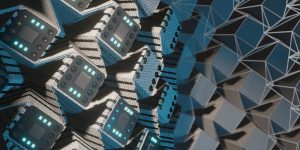
ORI*BOTICS
Kunst und Forschung zu Origami-Robotik
ORI*BOTICS, the art and science of robotic origami, ist ein fortlaufendes Forschungsprojekt, das die Verbindung von Origami, Technologie und Natur untersucht. Es baut auf neuartigen Methoden des Designs und der Herstellung von starkem, flexiblem und höchst unregelmäßigem Origami aus Textilien und 3D-Druck auf, insbesondere Fold Printing und Fold Mapping.
-
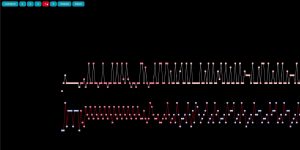
Sounding Letters
Wenn KI Buchstaben in Musik verwandelt
Ars Electronica Futurelab und Ars Electronica Center feierten im Jahr 2021 ihr 25-jähriges Bestehen. Im Rahmen der Feierlichkeiten entstand Sounding Letters: Es verwendet die Anfangsbuchstaben der beiden Institutionen als musikalisches Thema, zu dem mit Hilfe des KI-Systems Ricercar ein Musikstück komponiert wurde.
-

Memo Futurum
Zukunftsvisionen über die Zeit hinweg teilen
Memo Futurum ist eine Einladung, sich mit unseren persönlichen und kollektiven Zukunftsvisionen auseinanderzusetzen. Die Öffentlichkeit konnte sich über die Website beteiligen und bis Ende 2021 eine Sprachnachricht einreichen. Die Beiträge wurden dann auf Schallplatten übertragen, die erst in 25 Jahren wieder geöffnet werden, wenn der Zyklus von Neuem beginnt.
-
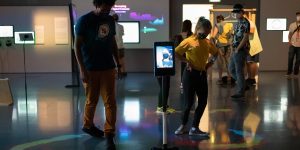
OutReach
Physische Interaktion für Telepräsenzroboter
OutReach ist eine Lösung, die die Stärken von Telepräsenzrobotern ausspielt. Indem Lichtschalter, Aufzugsknöpfe oder andere Bedienelemente in einem bestimmten Umfeld um ferngesteuerte Aktoren erweitert werden, ermöglicht OutReach die Interaktion mit der entfernten Umgebung.
-

Ars Electronica Tokyo Initiative
Gemeinsam für Innovation und Gesellschaft
Seit 2014 arbeiten Hakuhodo and Ars Electronica am gemeinsamen Projekt Future Catalysts. Um diese Aktivitäten zu erweitern, gründeten die beiden Institutionen die ARS ELECTRONICA TOKYO Initiative (AETI): eine Innovations-Community mit einer Mission.
-
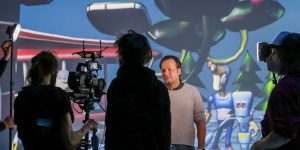
Deep Virtual
Videos mit hybrider Realität in Echtzeit
Das neue Videoproduktionssystem Deep Virtual ist in der Lage, virtuelle und physische Realität in Echtzeit zu verschmelzen und diese hybride Realität verzögerungsfrei zu übertragen. Mit seiner Entwicklung hat das Ars Electronica Futurelab einen Meilenstein in der Geschichte des Deep Space 8K gesetzt, denn das Konzept für hybride Live-Videoproduktion bringt die Übertragung virtueller Illusionen einen entscheidenden…
-

Resonant Media
Ausstellung rund um 8K-Visualisierung
„Resonant Media – Possibilities of 8K Visualization“ verfolgte einen künstlerischen und wissenschaftlichen Ansatz, um die neuen Möglichkeiten von 8K aus verschiedenen Perspektiven zu erkunden. Die Ausstellung in Tokio im Jahr 2021 präsentierte eine Vielzahl von Projekten, die die Zukunft von 8K über den bestehenden Rahmen hinaus erforschten.
-
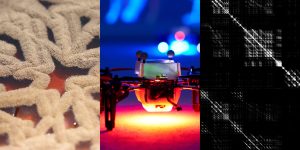
Future Ink
Wo ist meine Seele in der Kreativität?
Das Future Ink Project ist ein Forschungsprojekt rund um die Zukunft der Kreativität unter Berücksichtigung aller Aspekte von Tinte. Im Rahmen von Future Ink wurden verschiedene Prototypen entwickelt, von der Verwendung von Tablets und Drohnen zum Malen bis zur Visualisierung von Gehirnströmen und Körpersignalen als immersive dreidimensionale Tinte.
